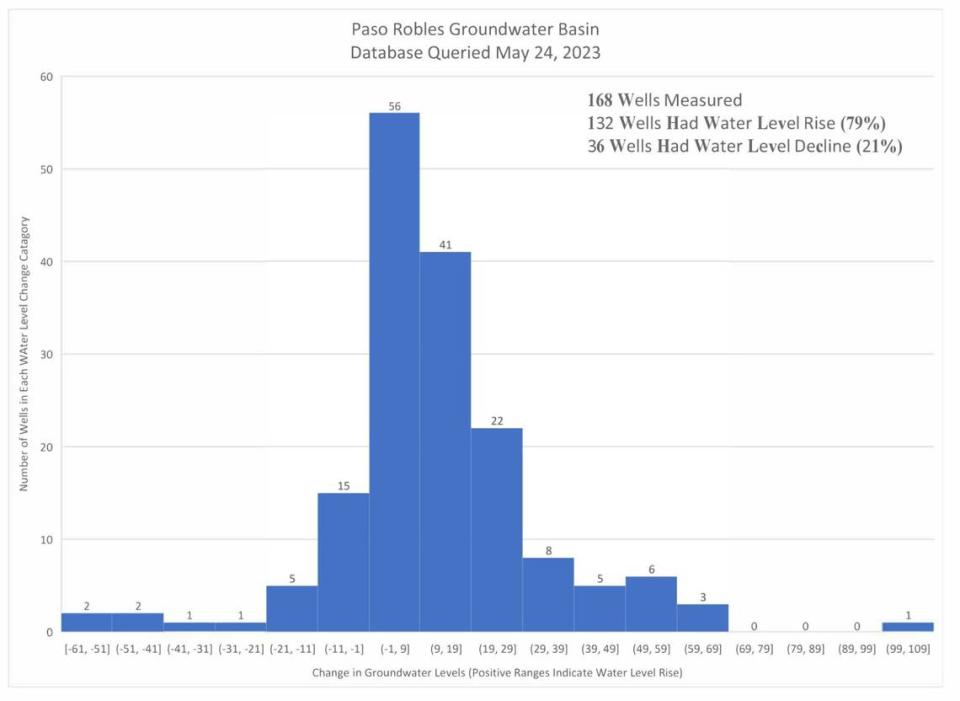How did winter rains affect Paso Robles groundwater basin? There’s ‘really good news’
Heavy winter rains did some good for the dire groundwater conditions in the Paso Robles area, new data show.
According to the San Luis Obispo County Groundwater Sustainability Department, 79% of the wells measured in April on the Paso Robles groundwater basin had higher levels than the same time the year before.
Some wells had water levels rise more than 50 feet — a difference that could mean those households may be able drink their own water again.
“It’s really good news,” agency director Blaine Reely said. “I’m excited to see even more improvement as the water continues to percolate down.”
Nearly 20 inches of rain fell in the Paso Robles area from December through March. That’s about double the amount the area typically sees during those months, according to data from the National Weather Service.
It takes a while for rainfall to seep through the soil and into the underground aquifer, Reely said.
So seeing big improvements in many of the wells measured in April was surprising, he added.
“The groundwater basin responded much better to stormwater runoff and recharged much better than I thought it was going to,” Reely said.
Data show improved groundwater levels after winter rains
Out of the 168 wells measured on the Paso Robles groundwater basin, 132 showed an increase in water levels in April compared to April 2022, according to the county’s data.
Another 36 had levels decline over that same period.
Most of the wells measured showed water levels rise about 1 to 20 feet, the data show.
Many rural residents on the Paso Robles groundwater basin rely on wells drilled hundreds of feet underground for their source of water.
With the recent droughts, several of those wells have dried up, leaving residents to pay steep costs to drill their wells deeper or have water trucked in.
Reely was optimistic the winter rains improved conditions for some on the groundwater basin.
“For the folks who rely on wells for their water, now they may have water to pump,” he said.

Is Paso Robles basin sustainable?
Reely noted it is important to temper one’s enthusiasm when it comes to the state of the Paso Robles groundwater basin.
San Luis Obispo County’s latest annual report for the basin painted a grim picture for the important resource, showing a huge decline in water levels during the 2022 water year that spanned from Oct. 1, 2021, through Sept. 30, 2022.
About 87,200 acre feet of water were pumped from the basin in the 2022 water year — far above the estimated sustainable yield of 61,100 acre feet, according to the annual report. One acre foot of water is equal to about 325,851 gallons.
The massive withdrawals from the basin caused its water storage levels to drop 117,100 acre-feet. That’s a much larger drop than previous years, according to the report.
The recent improvements in water levels are “a great start,” Reely said. “But we have a long way to go until the basin is sustainable.”

